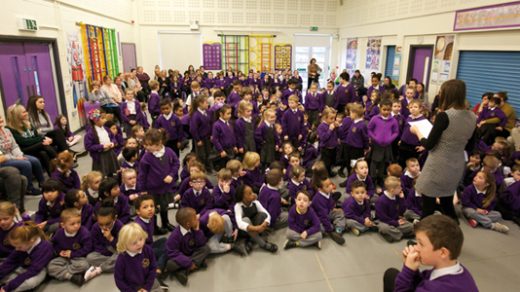Hundreds of thousands of students receive GCSE and vocational results

Hundreds of thousands of students receive GCSE and vocational results today. It is the first time in three years that students have sat summer GCSE examinations as we return to normality post-Covid.
Students collecting results today will progress to one of a number of high-quality options including A-levels, T-levels or an apprenticeship. From September there will be 16 T-levels available for young people to study, in subjects including digital, health, accounting, engineering and construction, offered at over 175 schools and colleges across England.
Just over three-quarters (75.3%) of GCSE grades for 16-year-olds in England are at grade 4 or above, up from 69.9% in 2019 when formal exams last took place and down from 79.1% in 2021, in line with the policy intent set out last year.
According to government figures top grades for 16-year-olds in England have also increased on 2019 as intended, with 27.0% of entries achieving a grade 7 and above, up by 5.2ppt compared to 2019, and 3.0ppt lower than 2021.
In line with the plans announced last autumn, and as part of the transition back to pre-pandemic grading levels, overall grades today are higher than in 2019 – recognising the unprecedented disruption students have faced – but lower than in 2021 when exceptional steps were taken to ensure progression.
Students were supported with a range of adaptations this year including advance information on the content of some exams, formula sheets and content optionality for GCSE students while some students doing vocational and technical qualifications were given longer assessment windows.
This is alongside continued support from the National Tutoring Programme, through which they are offering up to six million tutoring courses over the lifetime of the programme. So far over two million courses have started. In AY22/23, the government will provide £349m direct to schools to subsidise the cost of tutoring.
In recognition of the greater gaps in older pupils’ learning and the lower amount of time those pupils have left in education, the government is investing over £800m to increase time in schools and colleges from 16-19 around 40 hours a year from September for all students.
The additional funding schools receive to support pupils’ recovery will also nearly double for secondary schools from September 2022, with a typical secondary school set to receive £60,000 for evidence-based activities such as extra support with English and maths, attendance initiatives and summer schools, as part of the £1bn recovery premium.
Education Secretary James Cleverly said: “Students receiving their results today should be extremely proud, and I want to congratulate them all. The teaching profession has worked incredibly hard and these results are a testament to the resilience of both our students and staff.
“We have the most exciting range of post-16 options for students to choose from now, whether that’s one of our exciting new T-levels, an apprenticeship or A-levels. There is an option for everyone.
“I wish students the very best of luck, no matter what those next steps are.”
Statistics published today also show:
- Entries at grade 4 or above for 16-year-olds in England were 77.2% for GCSE English and 75.1% for GCSE maths
- Attainment gap between boys and girls narrowed compared to 2021 at the top grades
- The proportion of geography and history entries are up by 10.1% and 5.7% respectively compared to 2019, bringing entries into EBacc subjects to nearly four million
- The proportion of grades at 7 and above in independent schools in England has dropped by 8.3ppt on 2021, compared to 2.4ppt in academies, narrowing the gap between the two groups at this grade
- 369,220 certificates across 141 qualifications have been awarded since March 2022, 96% of which are Technical Awards taken alongside GCSEs
Separate funding is also being targeted at the areas of the country where outcomes are weakest through the Government’s 55 Education Investment Areas, including investment to attract and retain the best teachers through bursaries and funding to increase the number of schools that can benefit from the support of a strong trust.







